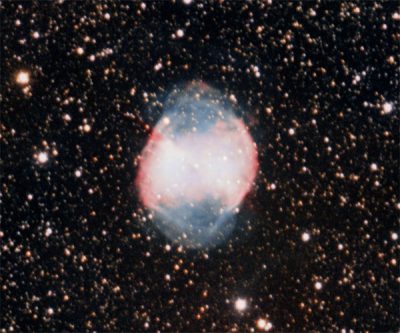Reprinted from the Island Free Press
Expect the annual Orionids and Taurids meteor showers to put on shows this month.
Supporter Spotlight
The Orionids meteor shower will be active from Oct. 4 through the end of the month — and into November. It peaks on the night of Oct. 21. Expect 20 to 25 meteors per hour. The shooting stars can appear in any part of the skies, but they will seem to originate from the constellation Orion. Look for the Orionids between midnight and dawn.
The Southern Taurids meteor shower will peak on Oct. 9. This is a minor shower, but it has a good record of producing fireballs, or exceptionally bright meteors. The Southern Taurids are visible every night in October, with peak viewing around 2 a.m.
The Northern Taurids begin on Oct. 19 and are active until December. As with the Southern Taurids, this is a minor shower that has a reputation for producing fireballs. Peak viewing is around midnight.
Also like the Orionids, the shooting stars and fireballs from the Taurids can appear anywhere in the night skies, but they will appear to emanate from the constellation Taurus. If you’re a stickler for finding the source of the Taurids, try locating the Pleiades. It’s just about in the center of the constellation.
The Pleiades, also known as Messier 45 or M45, began to rise in the east at about 9 p.m. on Oct. 1. It’s a tight cluster of stars you can use to check your vision. There are six prominent stars that are readily visible with the unaided eye. Under very dark good conditions, you might be able to spot more. Johann Kepler reported 14 in the 17th century. The last time I checked, I could only see five stars — getting old is tough.
Supporter Spotlight
Planet Viewing in October
October began with Venus visible near the west-southwest horizon. It’s visible just after sundown. Mars shows up almost directly above the southern horizon, and Saturn is visible between Mars and Venus. For those of you with a telescope, Neptune began the month near the eastern horizon.
Mercury became visible near the eastern horizon just before dawn on Oct. 1. Jupiter will start showing up near the eastern horizon early this month. On the morning of Oct. 11, the two planets will appear to be almost on top of each other. This is their conjunction.
October should be a great month for locating deep-space objects with binoculars. The Andromeda Galaxy is still a good starting point. But you might want to try to find the three objects I highlighted during September in next part of this article.
M51, a spiral galaxy about 30 million light years away, began the month in the northwest, just below Alkaid, the first star in the handle of the Big Dipper.
M27, also known as the Dumbbell Nebula, is almost directly overhead early this month. You can also turn your binoculars towards the Pleiades. There’s quite a bit of nebulosity surrounding the stars in that group and you might be able to see some of it.
September Highlights
September had two new moons. The first was on Sept. 1, and the second was on Sept. 30. A second appearance of a new moon during a calendar month is called a black moon. A new moon is the best time of month to look at deep-space objects and September didn’t disappoint me. The first new moon offered some very good nights for viewing the stars.

NGC 253, the Sculptor Galaxy, left, is also called the Silver Coin Galaxy and the Dusty Island Universe. NGC 253 is about 11 million light years away from us and roughly the same size as the Milky Way. It’s the third-brightest galaxy in the night sky. Only the Andromeda Galaxy, or M31, and Sombrero Galaxy, or M104, are brighter. You can’t see it with the unaided eye but you can see it through a good pair of binoculars or a small telescope.

M27, the Dumbbell Nebula, right, is one of my favorite nebulae. I’ve shown images of it before, but I think this is probably the best one I’ve ever taken. It’s about 1,300 light years away, and yes, like the Sculptor Galaxy, you can see it through binoculars.
I added this image of M51, below, for three reasons. First, it’s a fairly good image, particularly since it was the very first deep-space object I photographed with my high-speed, high-sensitivity ZWO astronomy camera. Second, you can spot M51 with binoculars, as with M27 and NGC 253. And, finally, I shot all three of these images on the same night. I usually consider it a pretty good night if I get one decent shot, so getting these three in what seemed like rapid sequence was pretty special.

Moon Phases
- First Quarter: Oct. 9
- Full moon: Oct. 16
- Last Quarter: Oct. 27
- New moon: Oct. 30
Learn More
This story is provided courtesy of the Island Free Press, a digital newspaper covering Hatteras and Ocracoke islands. Coastal Review Online is partnering with the Free Press to provide readers with more environmental and lifestyle stories of interest along our coast. You can read other stories about Hatteras and Ocracoke here.







